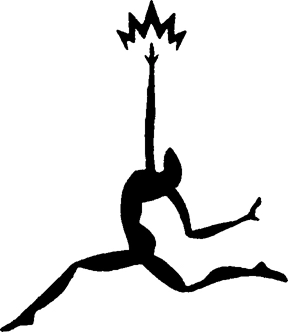Every shrub in his forum may not be placed just where it grew, but the buildings are in their proper relationship and pretty much in their proper proportion. If they look gargantuan, it is because he shrank the human figures he placed in such thespian postures about them—an old trick still favoured by factory owners who show their plant on a letterhead. Piranesi did not hesitate to apply imagination when a decorative detail in the original had disappeared. But he was so conversant with ancient Rome that his friezes and rosettes were almost as good as the originals. In his shop he restored actual stonework. His customers preferred things whole.
Whether or not they met or knew each other’s work, Gibbon and Piranesi are kindred artists, each giving pulsing life to his record. From a fragment of a palace or an anecdote of an emperor we are permitted to see the past in the bright definition of morning light. Both the historian and the etcher have the same knack of shifting time backwards and forwards, so that morning fades to sunset, sharp images waver and go out of focus, and one sees in successive moments, as in a dissolving view on a screen, Rome in pristine splendor and decrepit age. There is a note of doom in this magic lantern show. One sees the universality of decline and fall. But this is not mere brooding over death; the hope of rebirth is implicit.
Curiously enough, Piranesi was a romantic and Gibbon was a realist; of the two, Gibbon belonged more to the eighteenth century; Piranesi anticipated dream worlds which were alien to the Age of Reason. Yet both reshaped their material as they felt it ought to look; for a realist can skirt reality as gingerly as a romantic. However they modeled their forms, they arrived at the same heroic end. Curiously, again, they have had to wait a century and a half to share the same volumes.
Analysis of Piranesi’s work has attracted several scholars. As authority for the present note, Arthur M. Hind’s Critical Study of Piranesi is cited. Therein the Roman views are numbered and described, and his productions are considered in detail.
Research has found that the eighteenth century misidentified some of the Roman remains. Piranesi naturally titled his subjects according to the knowledge of his day; Gibbon knew the monuments by the same misnomers. The Temple of Vespasian was thought to be that of Jupiter Tonans; the Basilica of Constantine, the Temple of Peace; the Baths of Trajan, the Baths of Titus; and so on. For the plates of this edition the correct names are given, sometimes in juxtaposition with Piranesi’s variants.
The greatest problem of translation lay in the names of monuments on the map of the Fora. While Piranesi showed with reasonable accuracy the buildings still existing in his day, he indulged in broad flights of fancy when he plotted the sites of those which were buried or gone. He made wonderfully-patterned plans, but they are only that. His numbers have been assigned to sites as we know them; and of course correct names are substituted for incorrect. This chore was undertaken by Francis W. Robinson, Curator of European Art at the Detroit Institute of Arts, long a resident in Rome and student of its antiquities. He has also helped with translating Piranesi’s titles and captions.
Many of the monuments depicted by Piranesi may be located on this map. Some of them fall outside the region of the Fora, and some are of course outside Rome. If one were to take a tourist’s walk he might begin with the Roman Forum, as we do in the order of pictures in this first volume, and proceed from the Capitol to the Coliseum. Then he would visit the adjoining imperial Fora, the Cattle Market, the Palatine Hill, and finally get out to the gates of the ancient city, with the aqueducts, roads, and tombs beyond. If he had a chariot he might drive on to see the bridges, Tivoli with its falls, the Villa of Maecenas and the Villa of Hadrian, and finally, with changes of horses, Cori and Beneventum.
PAUL MCPHARLIN


Edward Gibbon is one of those few who hold as high a place in the history of literature as in the roll of great historians.
1 comment